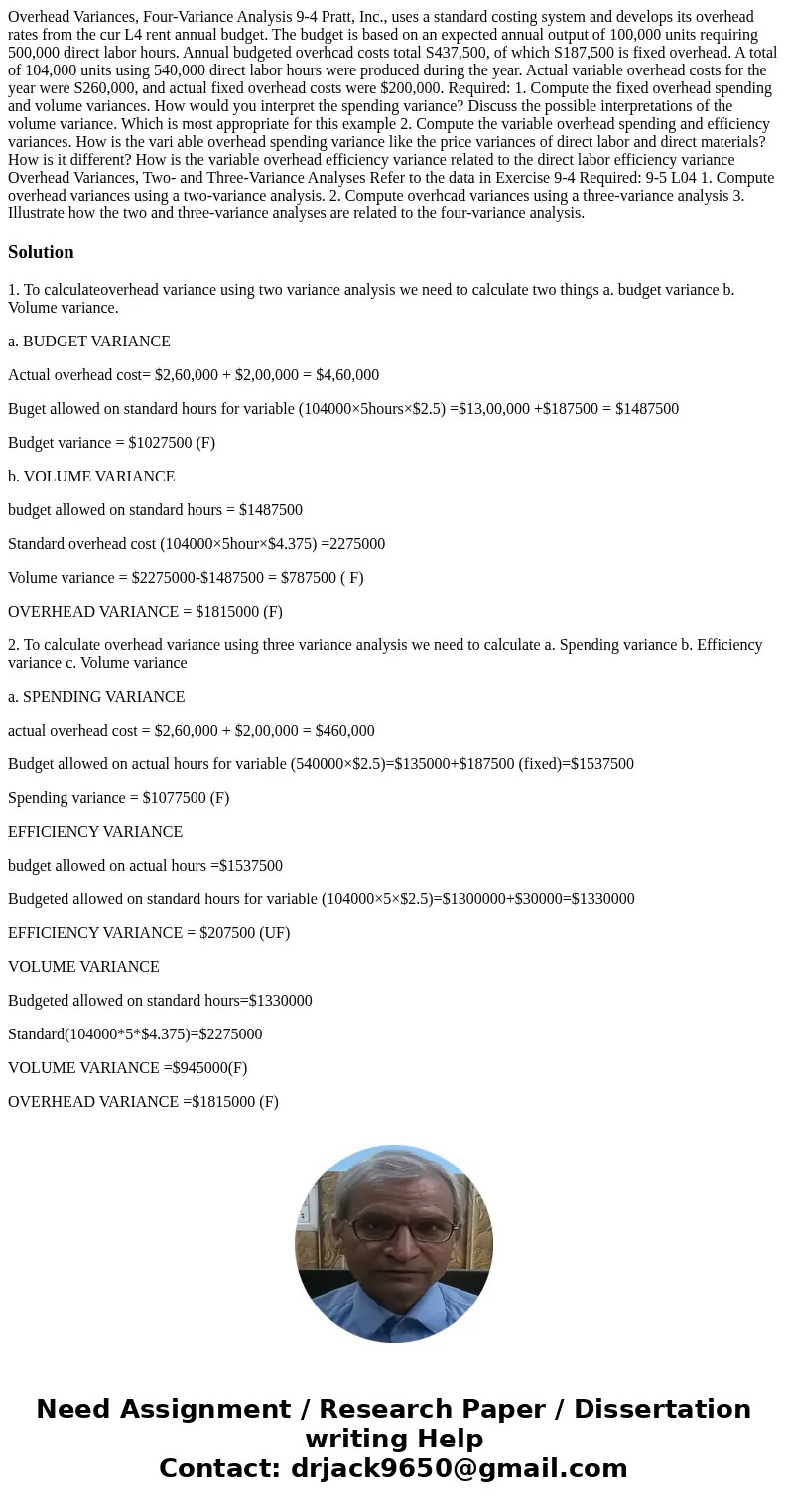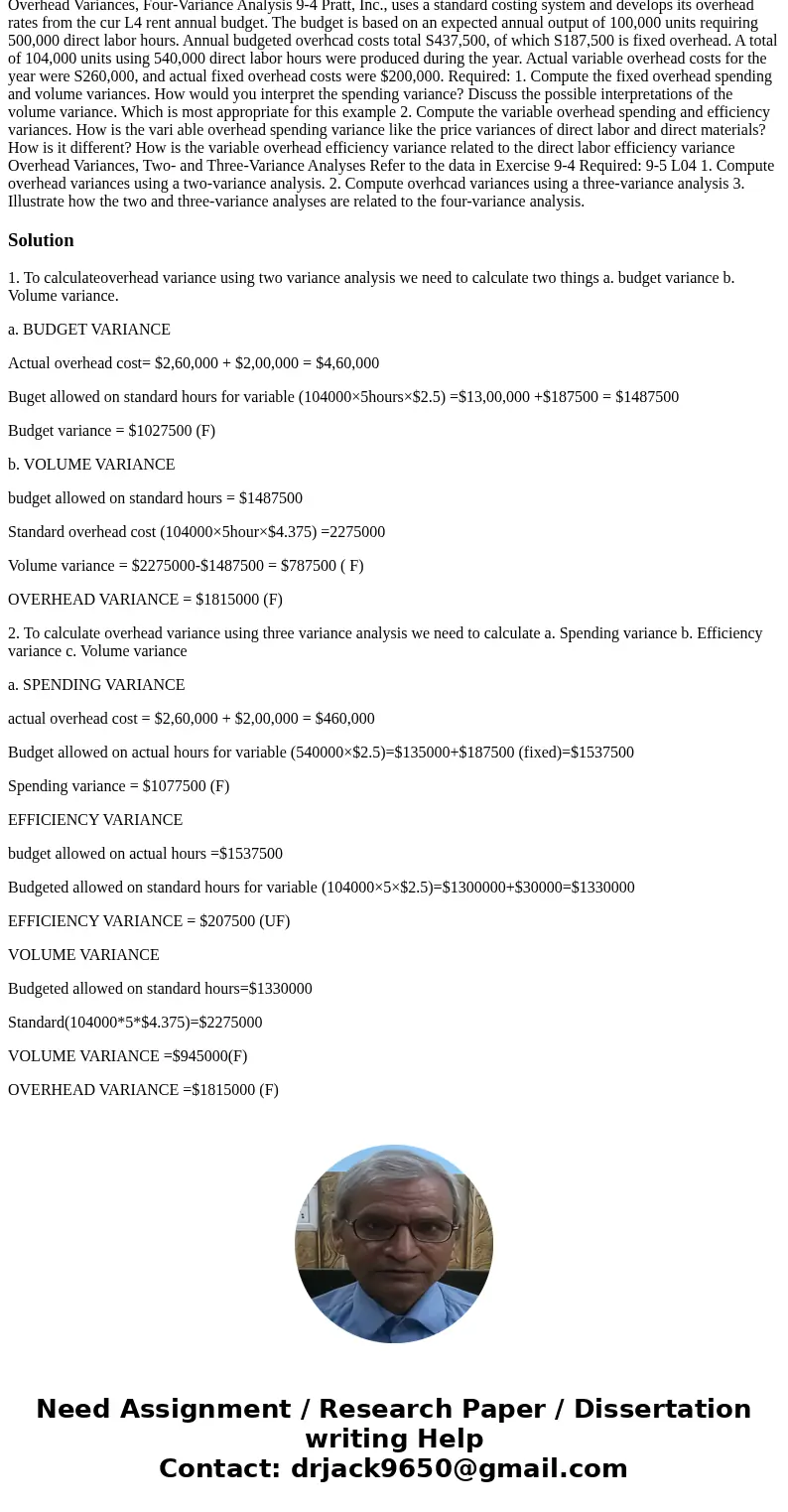Overhead Variances, Four-Variance Analysis 9-4 Pratt, Inc., uses a standard costing system and develops its overhead rates from the cur L4 rent annual budget. The budget is based on an expected annual output of 100,000 units requiring 500,000 direct labor hours. Annual budgeted overhcad costs total S437,500, of which S187,500 is fixed overhead. A total of 104,000 units using 540,000 direct labor hours were produced during the year. Actual variable overhead costs for the year were S260,000, and actual fixed overhead costs were $200,000. Required: 1. Compute the fixed overhead spending and volume variances. How would you interpret the spending variance? Discuss the possible interpretations of the volume variance. Which is most appropriate for this example 2. Compute the variable overhead spending and efficiency variances. How is the vari able overhead spending variance like the price variances of direct labor and direct materials? How is it different? How is the variable overhead efficiency variance related to the direct labor efficiency variance Overhead Variances, Two- and Three-Variance Analyses Refer to the data in Exercise 9-4 Required: 9-5 L04 1. Compute overhead variances using a two-variance analysis. 2. Compute overhcad variances using a three-variance analysis 3. Illustrate how the two and three-variance analyses are related to the four-variance analysis.
1. To calculateoverhead variance using two variance analysis we need to calculate two things a. budget variance b. Volume variance.
a. BUDGET VARIANCE
Actual overhead cost= $2,60,000 + $2,00,000 = $4,60,000
Buget allowed on standard hours for variable (104000×5hours×$2.5) =$13,00,000 +$187500 = $1487500
Budget variance = $1027500 (F)
b. VOLUME VARIANCE
budget allowed on standard hours = $1487500
Standard overhead cost (104000×5hour×$4.375) =2275000
Volume variance = $2275000-$1487500 = $787500 ( F)
OVERHEAD VARIANCE = $1815000 (F)
2. To calculate overhead variance using three variance analysis we need to calculate a. Spending variance b. Efficiency variance c. Volume variance
a. SPENDING VARIANCE
actual overhead cost = $2,60,000 + $2,00,000 = $460,000
Budget allowed on actual hours for variable (540000×$2.5)=$135000+$187500 (fixed)=$1537500
Spending variance = $1077500 (F)
EFFICIENCY VARIANCE
budget allowed on actual hours =$1537500
Budgeted allowed on standard hours for variable (104000×5×$2.5)=$1300000+$30000=$1330000
EFFICIENCY VARIANCE = $207500 (UF)
VOLUME VARIANCE
Budgeted allowed on standard hours=$1330000
Standard(104000*5*$4.375)=$2275000
VOLUME VARIANCE =$945000(F)
OVERHEAD VARIANCE =$1815000 (F)


 Homework Sourse
Homework Sourse